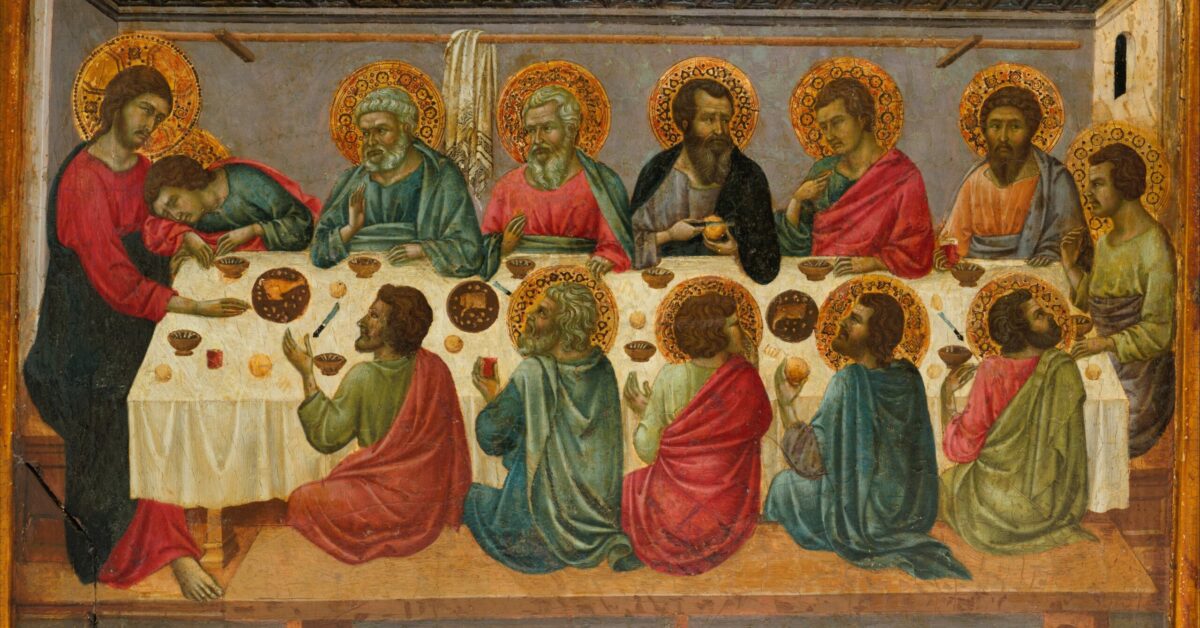Awe-Inspiring: Receiving the Holy Mysteries of the Eucharist
As the end of our 50 days of Easter feasting approaches, we also are reaching the end of this series on fourth-century mystagogical catechesis. Today I (Rhoda) will share a few literary gems from Cyril of Jerusalem and Theodore of Mopsuetia on the Eucharist.
First, the commentary of Theodore of Mopsuetia on the kiss of peace draws together the sacrament of baptism with the meal the neophytes had share for the first time, immediately after their baptism at the Easter Vigil.
This kiss which all present exchange constitutes a kind of profession of the unity and charity that exists among them. Each of us gives the Kiss of Peace to the person next to him, and so in effect gives it to the whole assembly, because this act is an acknowledgement that we have all become the single body of Christ our Lord, and so must preserve with one another that harmony that exists among the limbs of a body, loving one another equally, supporting and helping one another, … sympathizing with one another’s sorrows and sharing one another’s joys.
The new birth that we underwent at baptism is unique for this reason, that it joins us into a natural unity; and so we all share the same food when we partake of the same body and the same blood, for we have been linked in the unity of baptism. St. Paul says: ‘Because there is one loaf, we who are many are one body, for we all partake of the same loaf.’ This is why before we approach the sacrament of the liturgy we are required to observe the custom of giving the Kiss of Peace, as a profession of unity and mutual charity.
Awe-Inspiring Rites of Initiation, 221-22.
Next, Cyril’s description of the dialogue evokes the power of these words while reminding us that this brief exchange is one of the many ways Christians today are joined together with the saints across time and space when we participate in the eucharistic liturgy.
Next the priest says in a loud voice: Let us lift up our hearts. For at this most awesome [phrikodestate] moment we must indeed raise our hearts high to God, not keep them intent on the earth and one earthly matters. So the priest is virtually commanding you all at that moment to lay aside the cares of this life, your domestic worries, and to keep your heart in heaven on God who loves [humanity].
Then you answer: We have them lifted to the Lord. By these words of assent you declare you are at one with him. Now no one should stand there saying with his lips [these words] while in his mind he is preoccupied with worldly thoughts. We must be mindful of God at all times, but if human weakness makes this impossible [!] we should try especially hard at this time.
The priest then says: Let us give thanks to the Lord. For we ought truly to give thanks, because he has called our unworthy persons to this great gift, because he has reconciled us though we were enemies, and because he has counted us worthy of the ‘Spirit of [adoption]’. Then you say: It is right and just. So our giving thanks is a right and just act, whereas God’s action is not guided by what is just; his actions have gone beyond mere justice, for he has treated us generously and reckoned us worthy of such great blessings.
Awe-Inspiring Rites of Initiation, 90.
With Teddy the Mop (as one of my graduate professors referred to this church father) we have the horizontal aspect of the Eucharist, a meal of unity with all the members of Christ’s body, while Cyril stresses the vertical relationship—our relationship with God made possible because God “reckoned us worthy of such great blessings.” The Eucharist, like baptism, is a sacrament filled with multivalent meanings. In this meal God comes to meet us at every stage and in every circumstance of life. Thanks be to God!
+++++++
Image: The Last Supper, Ugolino di Nerio (1280-1330), Santa Croce Altarpiece; Metropolitan Museum of Art, New York City. Public domain, via WikimediaCommons. https://upload.wikimedia.org/wikipedia/commons/6/6e/1%D0%B3_Ugolino_di_Nerio._The_Last_Supper_Metropolitan_mus._N-Y.jpg
